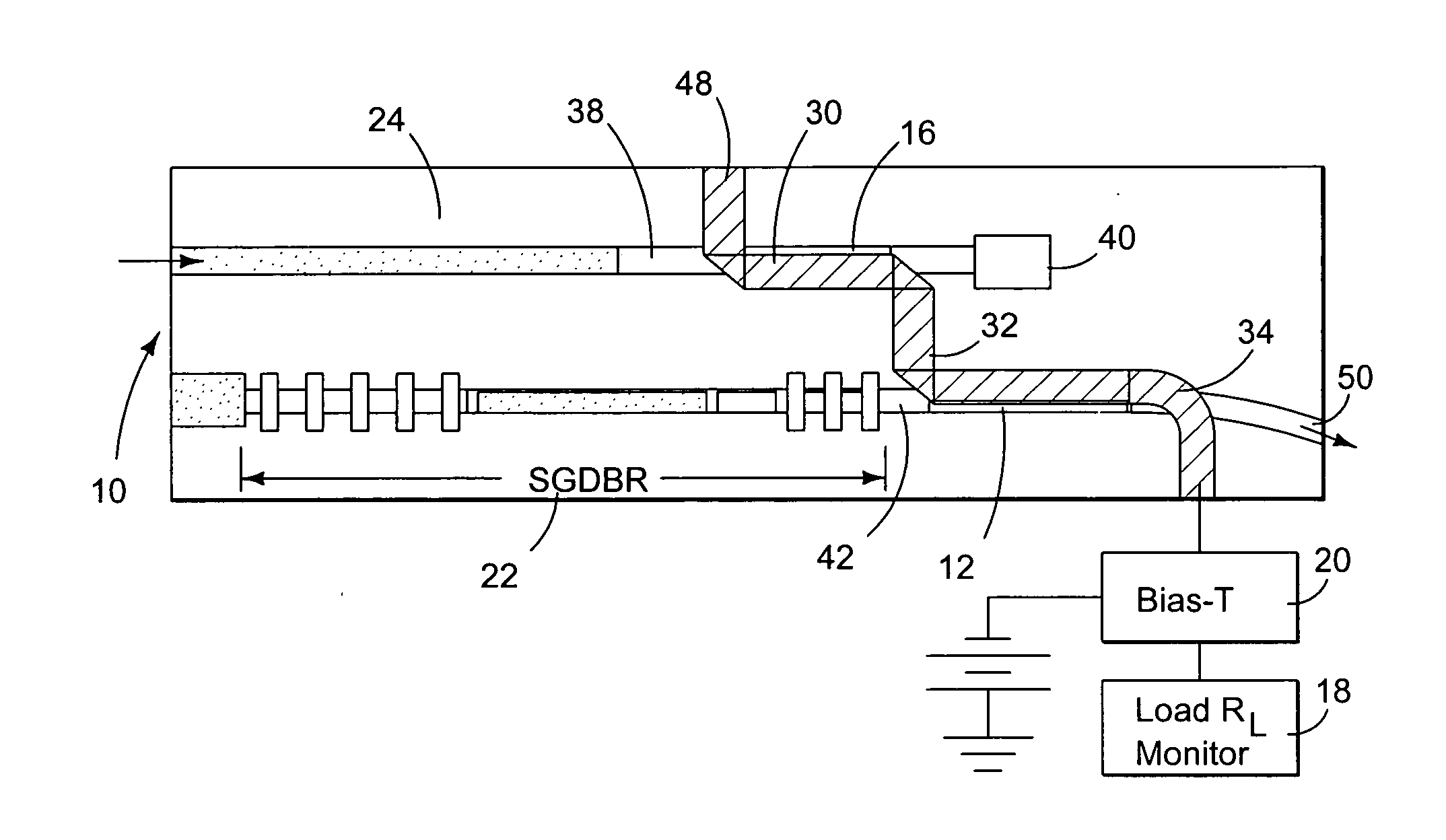Traveling-wave optoelectronic wavelength converter
a wavelength converter and optoelectronic technology, applied in the field of microelectronic and optoelectronic components, can solve the problems of limiting the operation bandwidth, large capacitance, and severe limitations, and achieve the effects of improving the efficiency and signal bandwidth, modulation extinction, and output optical signal level or wavelength conversion efficiency
- Summary
- Abstract
- Description
- Claims
- Application Information
AI Technical Summary
Benefits of technology
Problems solved by technology
Method used
Image
Examples
embodiments
[0030] Embodiments
[0031]FIGS. 1-5 illustrate five embodiments of traveling-wave optoelectronic wavelength converter assemblies 10 that provide for increased operating bandwidth with higher efficiency than possible with lump-element wavelength converters. FIGS. 1 and 2 employ a traveling-wave electro-absorption modulator (TWEAM) 12, and FIGS. 3, 4 and 5 employ a traveling-wave Mach-Zehnder interferometric modulator (TWMZM) 14. The TWEAM 12 has a smaller footprint and may require lower voltages, while the TWMZM 14 allows for better chirp control and can provide more output power. The TWEAM 12 and TWMZM 14 are generically referred to as a traveling-wave modulator (TWM) 12, 14.
[0032]FIGS. 1 and 3 use a series connection of the traveling-wave photodetector (TWPD) 16 and TWM 12, 14 elements, while FIGS. 2, 4 and 5 use a parallel connection of these elements. The series connection allows for separate optimization of the characteristic impedances of the TWPD 16, the TWM 12, 14, and the ele...
second embodiment
[0054] In FIG. 5, a parallel-connected optoelectronic wavelength converter assembly is shown, including a higher-impedance electrical transmission line 34 between the TWPD 16 and TWMZM 14, as well as a linearized SOA 24 acting as a preamplifier. By segmenting the contacts to the TWPD 16 and TWMZM 14, and by connecting them to the common high-impedance electrical transmission line 34 running therebetween, a higher overall transmission line 34 impedance is provided, and this will increase the propagating voltage magnitude for better wavelength conversion efficiency.
[0055] The SOA 24 in this case is linearized by including a grating 54 on its output side to provide for lasing at a wavelength that is somewhat shorter than the range of input signal wavelengths. This clamps the carrier density in the SOA 24, and thereby makes its gain insensitive to the level of the input signal.
[0056]FIGS. 7a-b and 8a-b again represent the electrical transmission line aspects for the cases of FIG. 3 and...
PUM
 Login to View More
Login to View More Abstract
Description
Claims
Application Information
 Login to View More
Login to View More - R&D
- Intellectual Property
- Life Sciences
- Materials
- Tech Scout
- Unparalleled Data Quality
- Higher Quality Content
- 60% Fewer Hallucinations
Browse by: Latest US Patents, China's latest patents, Technical Efficacy Thesaurus, Application Domain, Technology Topic, Popular Technical Reports.
© 2025 PatSnap. All rights reserved.Legal|Privacy policy|Modern Slavery Act Transparency Statement|Sitemap|About US| Contact US: help@patsnap.com



